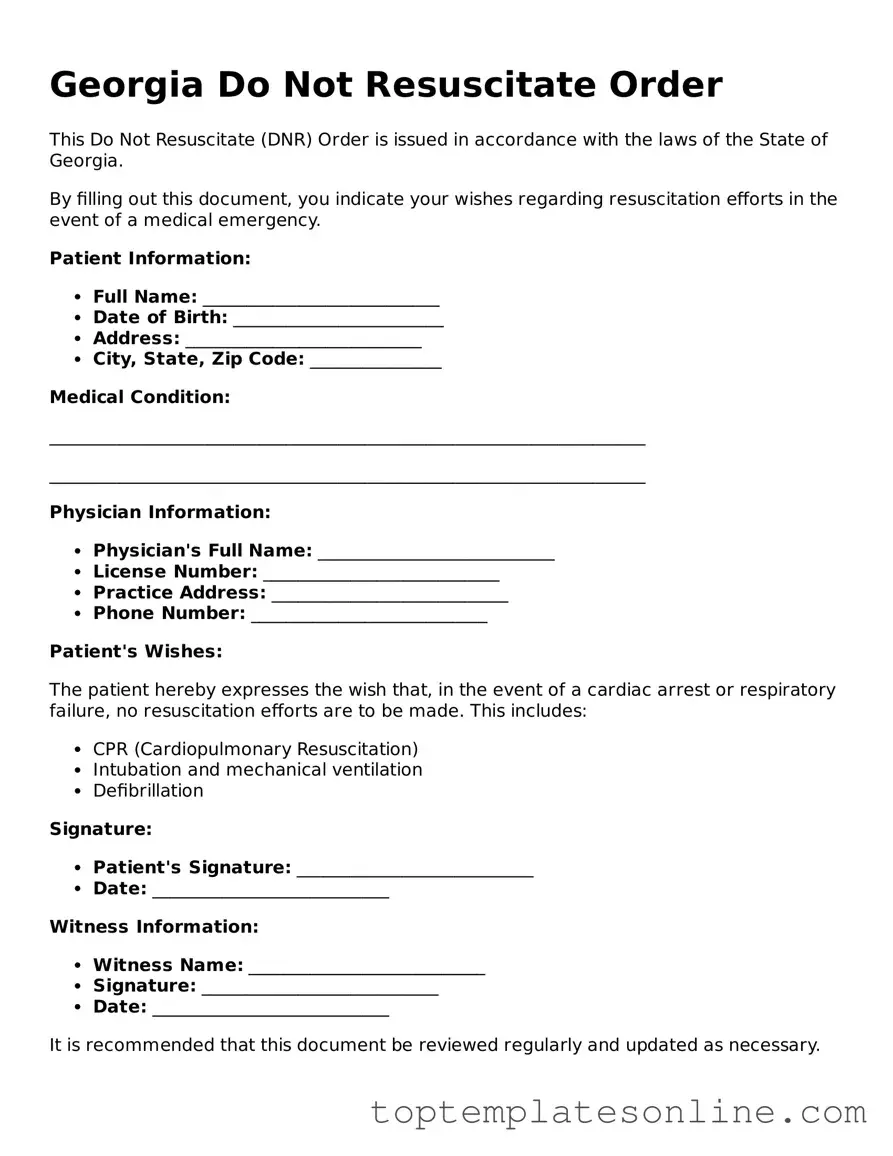Blank Do Not Resuscitate Order Template for Georgia State
A Georgia Do Not Resuscitate (DNR) Order form is a legal document that allows individuals to refuse cardiopulmonary resuscitation (CPR) in the event of a medical emergency. This form ensures that a person's wishes regarding end-of-life care are respected, particularly when they are unable to communicate. Understanding the implications of this form is crucial for individuals and families navigating difficult healthcare decisions.
Customize Do Not Resuscitate Order Here
